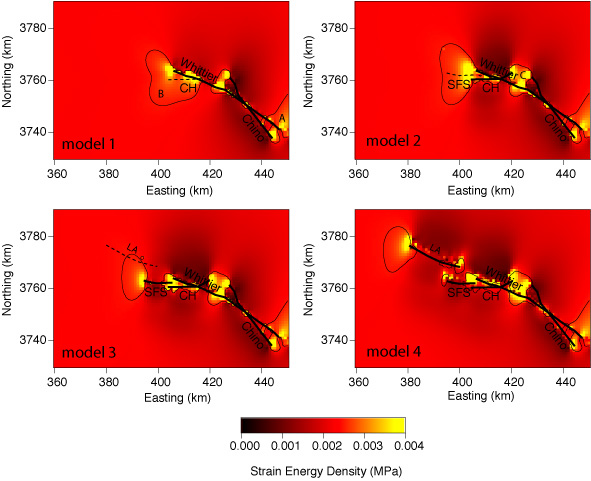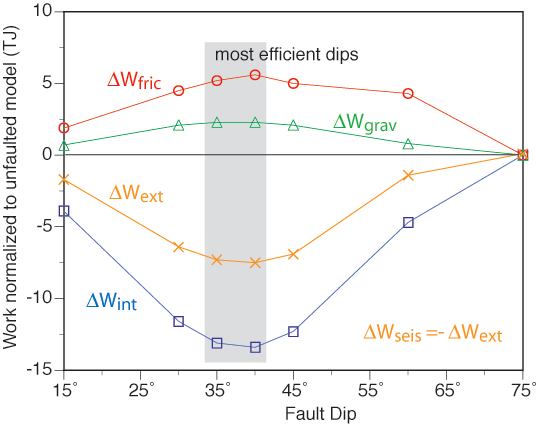Work distribution in active fault
systems:
Is the Earth Lazy?
This project examines the distribution of various work terms (work against gravity, work
against friction, internal strain work, seismic energy release etc ...) within
evolving fault systems.
Wtotal = Wgravity + Wfriction + Winternal + Wseismic + Wpropagation
The premise investigated is that fault systems evolve
(ie. develop new fault surfaces) in order to minimize work. Lazy faults will distribute deformation as fault slip while non-lazy faults will store deformation in the surrounding host rock. Fault slip is an effective way for the system to release energy by both fricitonal heating and seismic radiated energy, which are lost to the system. In contrast, uplift against gravity and internal deformation both store energy within the system.
CAREER: Response
of fault systems to shifts in tectonic regime: Implications for the evolution
of and present-day activity of fault systems in Southern California How do faults
in the Earth's crust evolve?
Analysis of Accretionary Systems
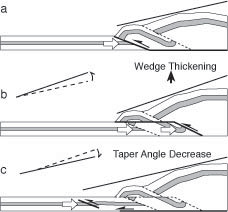
Within analog models accretionary prisms, we see a shift from underthrusting to accretion. |
|
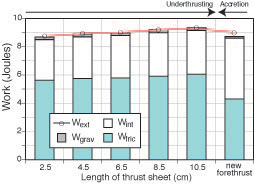
Our numerical models show that this transition is controlled the work of the system. The new thrust (accretionary) fault develops when the work benefit of the new fault exceeds the work cost of creating the fault. |
The position and vergence of the new faults act to minimize the overall work of the system.
- Del Castello and Cooke, 2007. The Underthrusting-Accretion cycle: Work Budget as Revealed by the Boundary Element Method, Journal of Geophysical Research, doi:10.1029/2007JB004997.
Analysis of the Las Vegas Shear Zone
Analysis of the Development of Fault Damage
• 2D mechanical efficiency
analysis of the Los Angeles Basin:
Cooke, Michele and Ayako
Kameda, 2002. Mechanical Fault Interaction within the
Los Angeles Basin: A Two-Dimensional Analysis using Mechanical Efficiency,
Journal of Geophysical Research: vol.I107(B7), doi:10.1029/2001JB000542 (PDF
file)
• Fault System Evolution
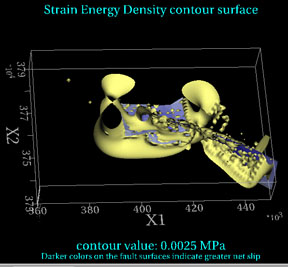 |
Three-dimensional VRML models of strain energy density around the faults at each stage of evoltuion:
Step 1: Whittier and Chino faults
Step 2: Whittier, Chino and Coyote Hills faults
Step 3: Whittier, Chino, Coyote Hills and Santa Fe Springs faults
Step 4: Whittier, Chino, Coyote Hills, Santa Fe Springs and Los Angeles faults |
• Work budget of active fault
systems


